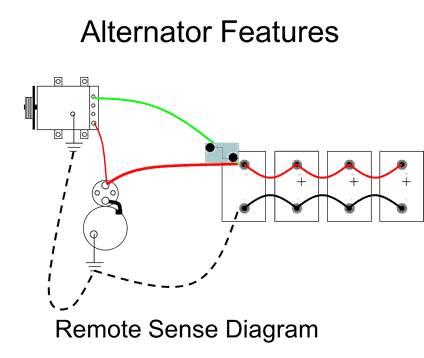While it’s often said that batteries are the heart of the electrical system for heavy-duty commercial trucks, the alternator plays very important daily roles in charging the system, including:
- Providing power for electrical devices
- Recharging the battery pack
First, it’s important to know which of the two types of alternators you are using:
- Brushless Alternators – no moving parts to carry electrical current to devices
- Brushed Alternators – parts that move with the rotor to carry electrical current
While manufacturers have made tremendous strides in providing longer life in brushed alternators, we suggest fleets use brushless alternators. Today’s brushless alternators, in most cases, can make it to the end of the complete trade cycle.
Fleets should also use the remote sense feature, which changes the alternator’s sense point from the output terminal to the battery pack itself. This greatly improves the recharging process, especially in cold weather.

Check with your alternator manufacture to obtain the efficiency ratings of your alternator. Once the efficiency rating is determined, use the formula below to determine the horsepower (HP) required to drive the alternator.
Volts times Amps equals Watts, then Watts divided by 746 equals the HP to drive the alternator at full output. Divide this number by the alternator’s efficiency rating to determine the total HPrequired to drive the alternator at full output. Below are a couple of examples:
| Year Made | Volts X | Amps = | Watts/ | 746= | HP/ | Efficiency = | Total HP |
| 1990s | 14 | 135 | 1890 | 746 | 2.53 | .5 | 5.07 |
| 2000s | 14.2 | 212 | 3010 | 746 | 4.04 | .8 | 5.04 |
In the above example, due to the efficiency grain, you could increase output by 77 amps with no additional HP to drive the alternator.
REMEMBER – The alternator and battery pack are on both ends of the charging system, connected by cables to both the positive and negative side of the charging circuit. These cables must be specified correctly and maintained during the service life of the vehicle in order to have an effective and efficient electrical system. The alternator only has output when being driven by the engine. When the engine is off, so is the alternator.
Have you experienced issues with alternator efficiency? What have you tried in order to resolve your efficiency problems? Comment below – we appreciate hearing from you.
Learn More About Alternators
Click here to subscribe to our free weekly e-newsletter to receive more updates about alternators and other electrical solutions. Our e-newsletter will help you reduce costs, avoid driver downtime and stay ahead of your competition.
